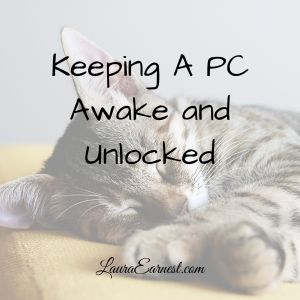
Habits of Extremely Productive People Made Simple
Mondays are productivity days at SimpleProductivity blog.
A few weeks ago I stumbled across an article in the Huffington Post about the habits of extremely productive people. While I agree with most points in the article, I’m not sure that some of them are truly habits (a consistent doing of something), and I think some of them are still over-complicated.
So of course I decided to write my own take on these, simplifying them down for the rest of us.
Cut your to-do list down to a manageable size.
The article had this as “Cut your to do list in half”. The article’s take on this was to cut out tasks that don’t matter.
I’m going to assume that the tasks on your list do matter, or you wouldn’t be reading this article looking for ways to be more productive. As I have said before, my opinion is that the people who tell us not to do tasks that don’t matter (such as grocery shopping, cleaning and laundry) have staff to do them. Most of us don.t
My personal take on this habit is that if your tasks are too time consuming, it’s still too much. Taking 4 4-hour tasks and turning that into 2 4-hour tasks is still too much.
The key to productivity is to break your tasks down into smaller chunks, and then make sure you have enough time in the day to do them.
For example, on the day when you have to work, then immediately go to a 3 hour dinner meeting for a professional organization, just to end up getting home at 10pm, is no the day for you to clean out the garage. Likewise, if you have back-to-back project planning meetings at work, it is not the day to sit down and work on a backlog of client correspondence.
One of my tricks is I break down tasks so that I can put a time estimate on them. No single task takes more than 30 minutes. I look at my list, add up the time estimates and decide if I need to cut some from the list. This saves me from the stress of a list I can’t get done.
Switch Things Up
The article had this a “Take more breaks.” The article mentions food and exercise as a way to prevent brain fatigue.
Sometimes it isn’t good to eat more (such as you aren’t hungry) or take a break for exercise (such as when you work for someone else).
I find that if you switch the types of tasks you are doing, it helps prevent the fogginess that can come from doing the same thing over and over. Althernate brain intensive tasks with things that are not so challenging. And of course, eat good food and drink plenty of water!
Be Constantly Aware of Diminishing Returns
The article had this as “Follow the 80/20 rule”, where they recommend whittling your project down until you have the 20% that will yield the 80% results.
It’s fine to realize that there is a lot we do that doesn’t hit the peak efficiency. But we also have to remember that stuff in that other 80% of effort may be exactly what we are expected to do.
By being aware of diminishing returns, you will know when you reach the point of the effort being put in is not giving results that are worth the effort.
Some examples: my mother irons everything. The shirts and blouses? Great. Dishtowels? Why?!? My daughter put together a report and had it done in content…and then spent another 4 hours fiddling with the fonts and margines to get the crispest look. Again, why?!?
Don’t Get Distracted First Thing.
The article had this as “Use your morning to focus on yourself”. The point was that you should start your day on your terms.
Since most of us work outside the home, we can’t take the whole morning to focus on ourselves. Our employers would not approve. And some of us depend on email in our jobs to let us know what the priorities are for the day.
However, be sparing in when and how you check your email. Checking your personal email (or social media) first thing is a good way to get yourself down a rabbit hole. I find that if you know what you are going to do because you have decided the day before, you are less likely to get distracted, and then can catch up when you need a breather.
Find Your Peak Energy
The article has this as “Tackle your challenging tasks before lunch”, meaning that you should do your challenging work when you have the most energy…i.e. the morning.
I have a problem with this because it assumes everyone has the same energy patterns. We don’t. And don’t be fooled into thinking that we can. (The assumption that everyone can be a morning person if they try hard enough is false. OK, I’ll step off the soapbox now).
You need to save your challenging tasks for when you have the most energy. Personally, I have a peak of energy around 11 am, and then again at about 7 pm. Ask me to do something brain intensive at 8 a.m. and the results will not be good.
Pay attention to your natural rhythms and work with them.
Use Email Wisely
The article had this as “Improve your email etiquette”, saying that email is a “productivity killer”.
I disagree. Email can be faster when you are not working with someone face-to-face, and gives them the opportunity to respond when they wish, rather than being interrupted with a phone call.
By using email wisely, you can actually save time. There are a few caveats:
- Be brief. No one wants to read an encyclopedia.
- Be succint. Get right to the point – within the first sentence.
- Only copy people if they absolutely need to be aware or have requested the copy. If you do copy someone, make the first line of the email note who you are expecting to act.
- If the information you are trying to convey can be done completely in the subject line, do so. And follow it with “–end of message–” (Example: “My timesheet is ready to approve –end of message–“
- Recognize when a phone call would be faster.
- Be clear with what you need back.
- My favorite: if you are sending an email to a large group of people, say to solicit baked goods for an upcoming event, address the email to yourself and BCC everyone else. That way when someone “replies to all” everyone doesn’t get a copy. Or better yet, use one of the websites suited for this sort of organization.
Email is a tool, but shouldn’t be used for all situations. Be aware of that.
Have Tools In Your Productivity Toolbox
The article had this as “Create a system,” pointing out that habits are best to get around productivity ruining activities.
Not all distractions are made equal, and having a wide variety of methods of keeping yourself on track is better than locking yourself into a rigid system.
For instance, some days all I need is to turn on white noise on my iPod to focus on writing. Other days I need to take myself somewhere there is no internet connection.
Keeping a wide variety of methods at your disposal will allow you to be flexible to meet the situation.
Know What True Productivity Is
The article had this as “Stop confusing productivity with laziness”. It also said that meetings are time-saving methods. (What?!)
True productivity is doing the right things in the best manner. Just because you are not doing something the best way doesn’t mean you are lazy. Neither does taking care of little details that are not essential, but are nice-to-haves. Just be aware of what you are doing and its value.
Stop multi-tasking
This is the original from the article. Although the article does say, “Changing tasks more than 10 times a day drops your IQ an average of 10 points”.
If we limited ourselves 10 types of tasks every day, most of us wouldn’t be able to get to work because we all do 10 things just getting ready in the morning!
Multi-tasking, though, is a productivity killer. We can’t actually do multiple things at once. What happens is the brain starts switching rapidly between all the tasks you are trying to do. Focus on doing one thing, and you will cut down on the total time your brain takes to refocus on new tasks.
Productivity doesn’t have to be rigid, nor does it have to be complicated.
Reader question: Can you simplify any of the productivity tips further?
Photo by cloth.paper.string | sarah. Licensed under Creative Commons.




